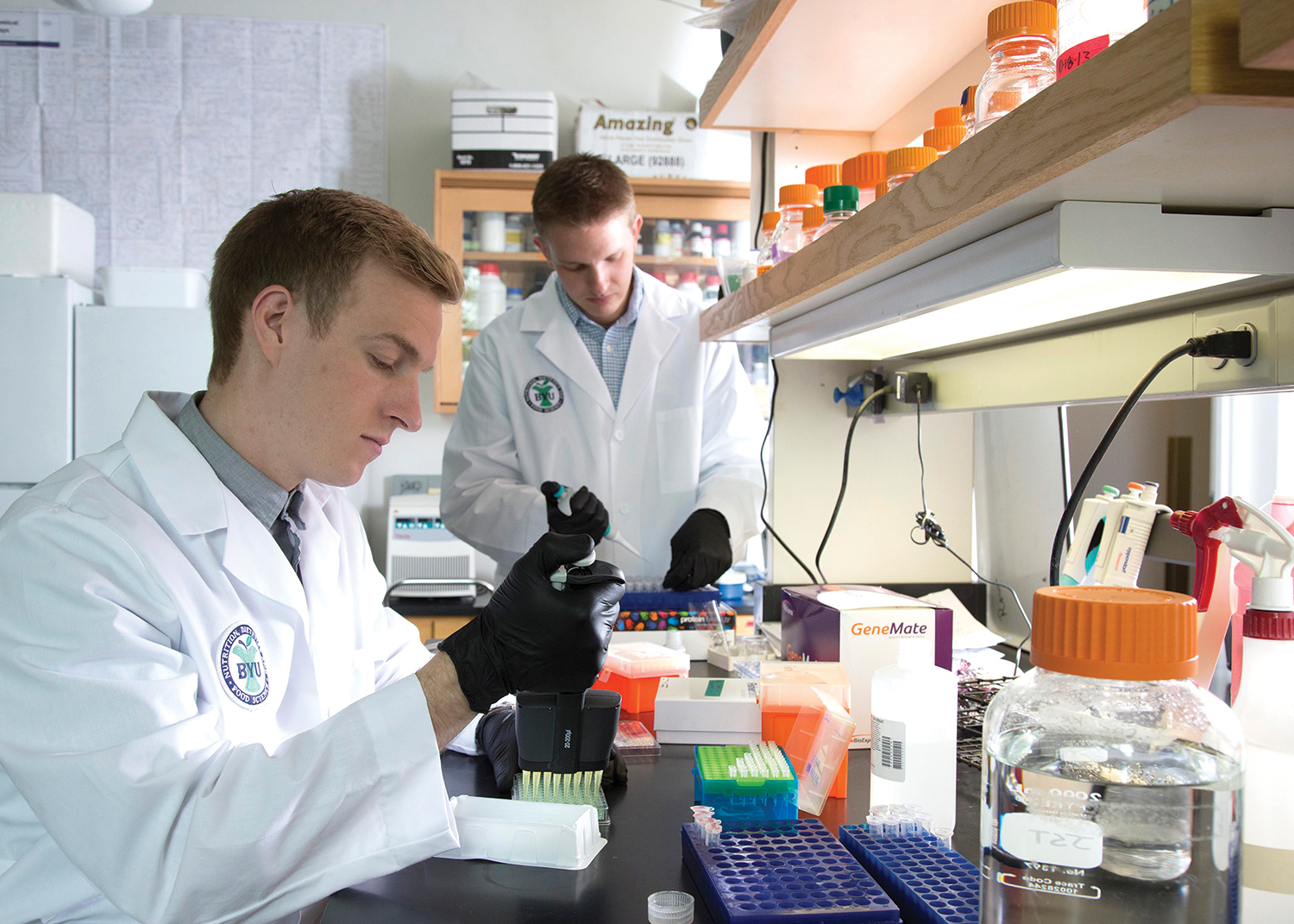Professor Jeffrey S. Tessem (BS ’01) has pinpointed a gene that may help solve a riddle at the root of diabetes—the high-blood-sugar disease affecting nearly 400 million people worldwide.
To peel back the cellular layers and understand that gene better, he’s turned to some experts with extensive personal knowledge about the disease: students with diabetes.

Benjamin Bitner (left) and Chad Tidwell were both diagnosed with Type 1 diabetes on their birthdays, and both are determined to help in the hunt for a cure.
Photo by: Mark A. Philbrick/BYU
Four of the students in Tessem’s nutritional science lab have Type 1 diabetes, the genetic version of the condition that is unrelated to diet and lifestyle. Two were diagnosed while on LDS missions, two were diagnosed on their birthdays, and all of them want to find answers.
“We’ll always be the first ones to volunteer to get injected with whatever’s next in search of a cure,” says Samuel G. Grover (’17). “My diagnosis has given me a path in life and I’ve found what I’m passionate about—because it’s who I am.”
The same can be said for lab-mates Matthew S. Ballard (’16), Benjamin F. Bitner (’16), and Chad D. Tidwell (’15), who have created a support group of sorts as they work together. “It’s more than just a research group, but a group where we can feed off of each other, learn from each other, and learn how to manage our diabetes,” Bitner says.
Led by Tessem, they’re investigating the molecular pathways that can activate the replication of beta cells. Beta cells are insulin-producing pancreas cells that are attacked and destroyed by the immune system of those with Type 1 diabetes.
Tessem’s team, which includes researchers at Duke University Medical Center, is concentrating on Aurora Kinase A, a gene that not only causes beta cells to replicate but also helps them maintain their ability to identify glucose and secrete insulin in response. Members of the team recently published on these findings in the academic journal Islets.
“We’re seeing these beta cells grow, divide, and secrete insulin, which is very novel and very exciting,” Bitner says.
Tessem and the students aim to define all the genes that let beta cells replicate, so that in time, chemists can devise drugs that can activate or shut off those genes.
“If we could give beta cells back to a patient who is diabetic, that would be a way of treating their diabetes,” says Tessem.
Current methods to reintroduce beta cells to diabetics include taking beta-cell-producing islets from cadavers and transplanting them into a patient. Lining up enough donors that have matching blood and tissue types for each diabetic is prohibitively expensive, time consuming, and sometimes minimally successful.
Knowing the pathways that induce beta cell growth could reduce the amount of islets needed for a recipient or, perhaps, could lead to solutions where a patient’s own residual beta cells replicate without a transplant.
Ultimately, the goal is to find a cure for diabetes. Says Grover, “To not have to worry anymore about insulin injections or our blood sugar and to be able to live normal lives—that’s the hope.”






